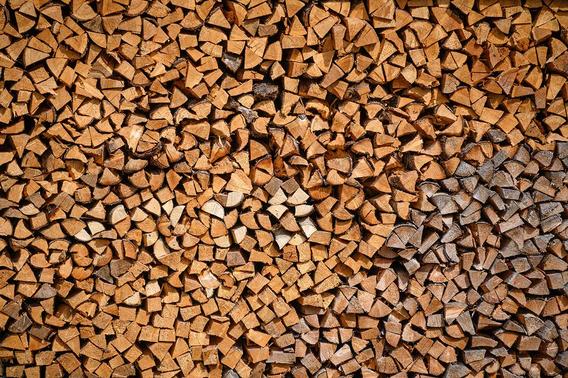
Familiarize yourself with the invasive species that may be traveling around the state inside that bundle you bought.
October 25, 2021
by CAROLYN BERNHARDT | MITPPC communications specialist
October is firewood month, which means organizations across the state and country have been sharing resources and information about the implications moving firewood has on our ecosystems. Invasive pests and pathogens move with the firewood they hide in, so burning firewood where you buy it (and leaving the wood you don’t burn near where you bought it) is key to help stop the spread of invasive species.
So what invasive species are tucked away in that bundle of firewood, anyway? At the Minnesota Invasive Terrestrial Plants and Pests Center (MITPPC), we are funding research on the invasive land-based species that pose the biggest threats to Minnesota’s resources. Many of these can hitchhike their way across the state through firewood.
Get to know some of the hardest hitters and why stopping them matters.
Dutch elm disease
MITPPC ranks Dutch elm disease as the #1 invasive pathogen threat to Minnesota. It is caused by the fungus Ophiostoma novo-ulmi and has decimated the American elm in urban Minnesota. The current strain of Dutch elm disease is more aggressive than the pathogen that caused the initial epidemic in the U.S., and has largely replaced that original strain altogether. Dutch elm disease is insect-vectored, meaning insects carry it from place to place. One of the bark beetles that transmits it in the U.S. (Scolytus multistriatus) ranks in the top 15 of MITPPC’s list of invasive insects that threaten the state.
Read more about how our researchers are developing Dutch elm-resistant trees for Minnesota.
Emerald ash borer
Nearly 8% of all the trees in Minnesota are ash species, all of them now threatened by the invasive emerald ash borer (EAB). EAB cost managers across the country an estimated $10.7 billion between 2002 and 2019 to treat, remove and replace more than 17 million ash trees. These green beetles are most striking as adults with shimmering, metallic bodies. But it’s actually the flattened, worm-like larval form of the insect that wreaks havoc on Minnesota’s ash trees. These larvae tunnel their way beneath the bark of ash trees, destroying the tree’s ability to transport water and nutrients. They also carry tiny fungi along with them that help accelerate the process. Without intervention, infestation is likely to be fatal for infected trees. EAB larvae can continue to develop just beneath the bark in cut firewood. When they emerge as adults, they can fly to nearby ash trees to continue their lifecycle.
Learn more about how our researchers are optimizing tree injections against emerald ash borer and using fungi to protect trees from emerald ash borer and new diseases.
Lymantria dispar
Originally released accidentally in 1869 by an amateur entomologist who’d hoped to breed a new type of silkworm, this moth remains one of today’s most damaging defoliating pests. During outbreaks, caterpillars can strip whole trees of their leaves. They also enjoy dining on 300 species of trees and shrubs, which makes them a danger to Minnesota's forests. An average of $1.1 million each year is spent on control and eradication measures against L. dispar. The defoliation these caterpillars leave behind leaves trees vulnerable to diseases and other pests, eventually killing the tree. Lymantria dispar moths can lay eggs on the surface of firewood or caterpillars can crawl into log piles in search of a place to develop into moths. Early detection is essential to limiting L. dispar’s spread, as is limiting their spread through firewood transportation.
Learn more about how we’re improving Lymantria dispar quarantine guidelines.
Mountain pine beetle
The mountain pine beetle (Dendroctonus ponderosae Hopkins) has killed millions of acres of pine forest in the western U.S. and Canada. Although physical distance and cold temperatures have kept it outside of Minnesota, barriers are quickly breaking down as the timber trade expands and climate continues to warm. These insects generally lurk just beneath the bark. Dead beetles have already turned up in wood imported to the state. Mountain pine beetle now ranks as Minnesota's number one invasive insect threat. South Dakota has mountain pine beetle, which means it could easily make its way to Minnesota. This pest is just one of many reasons why you should be sure to never transport firewood to Minnesota from out of the state.
Read more about how our researchers are developing a monitoring system to protect Minnesota from this devastating pest.
Oak wilt
More than 266,000 oak trees were infected by oak wilt fungus between 2007 and 2016 in Minnesota, making it the second greatest invasive pathogen threat to the state behind Dutch elm disease. It’s found in oak species in 25 of the 87 counties in the state. For tree removal costs alone, Minnesotans paid an estimated $60 million in the past decade because of this disease. Red oaks are especially vulnerable, usually succumbing within two months of infection. Oak wilt is spread by sap beetles above ground, and by joint root growths called root grafts below ground.
-
Read more about how our researchers are developing a handheld reader that will allow managers to detect oak wilt from wood chips within one hour, at less than five dollars per sample.
-
Read more about how our researchers are using drones to detect oak wilt in Minnesota remotel
Learn more about the firewood rules in Minnesota from the resources below: